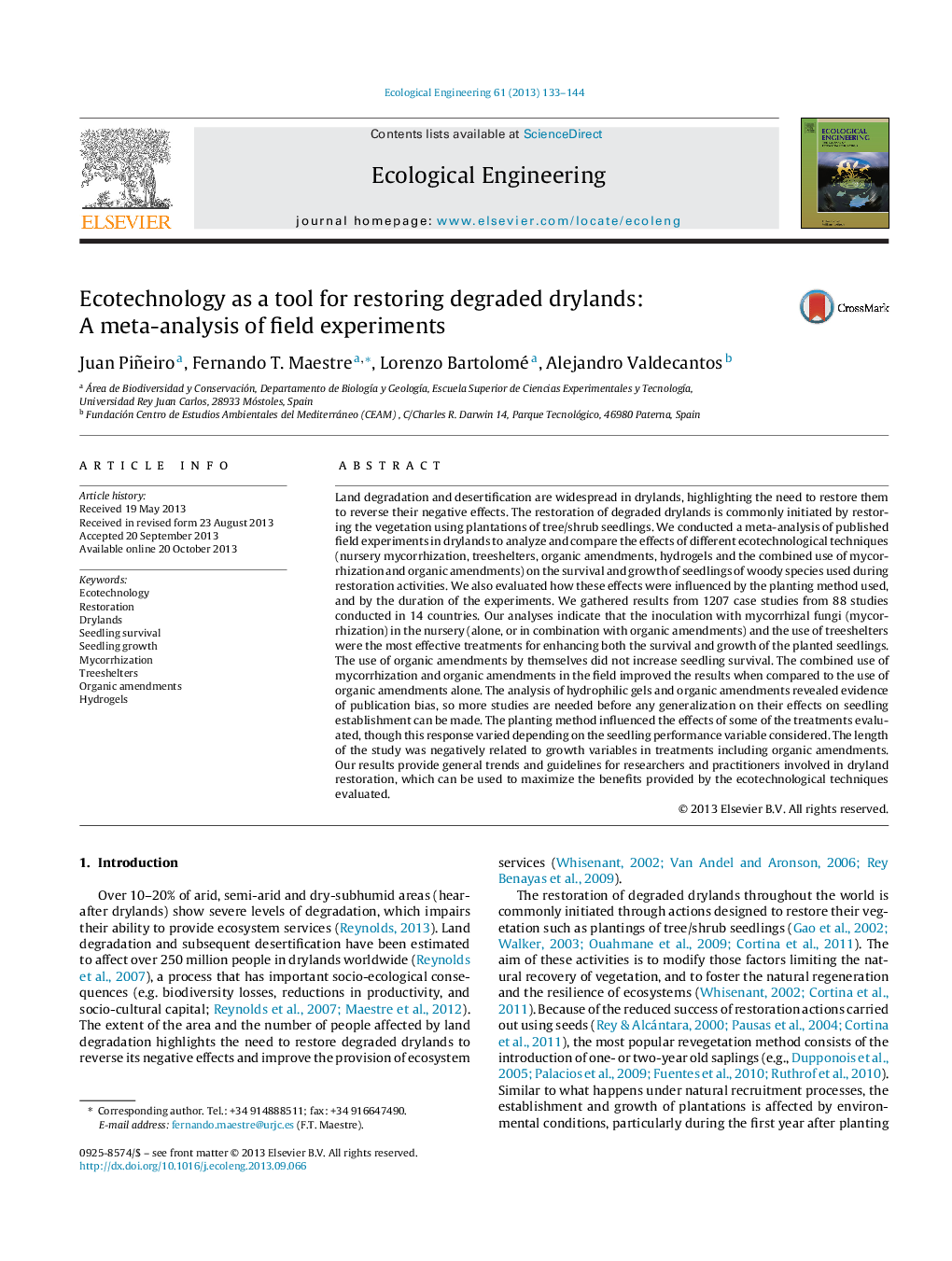| Article ID | Journal | Published Year | Pages | File Type |
|---|---|---|---|---|
| 4389472 | Ecological Engineering | 2013 | 12 Pages |
•We compared the effects of techniques used for plant establishment in drylands.•Inoculation with mycorrhizal fungi improved both seedling survival and growth.•Treeshelters improved seedling survival, but not all growth variables evaluated.•The planting method modulated the effects of the treatments evaluated.•More studies are needed to generalize effects of hydrophilic gels and organic amendments on woody seedling performance.
Land degradation and desertification are widespread in drylands, highlighting the need to restore them to reverse their negative effects. The restoration of degraded drylands is commonly initiated by restoring the vegetation using plantations of tree/shrub seedlings. We conducted a meta-analysis of published field experiments in drylands to analyze and compare the effects of different ecotechnological techniques (nursery mycorrhization, treeshelters, organic amendments, hydrogels and the combined use of mycorrhization and organic amendments) on the survival and growth of seedlings of woody species used during restoration activities. We also evaluated how these effects were influenced by the planting method used, and by the duration of the experiments. We gathered results from 1207 case studies from 88 studies conducted in 14 countries. Our analyses indicate that the inoculation with mycorrhizal fungi (mycorrhization) in the nursery (alone, or in combination with organic amendments) and the use of treeshelters were the most effective treatments for enhancing both the survival and growth of the planted seedlings. The use of organic amendments by themselves did not increase seedling survival. The combined use of mycorrhization and organic amendments in the field improved the results when compared to the use of organic amendments alone. The analysis of hydrophilic gels and organic amendments revealed evidence of publication bias, so more studies are needed before any generalization on their effects on seedling establishment can be made. The planting method influenced the effects of some of the treatments evaluated, though this response varied depending on the seedling performance variable considered. The length of the study was negatively related to growth variables in treatments including organic amendments. Our results provide general trends and guidelines for researchers and practitioners involved in dryland restoration, which can be used to maximize the benefits provided by the ecotechnological techniques evaluated.
